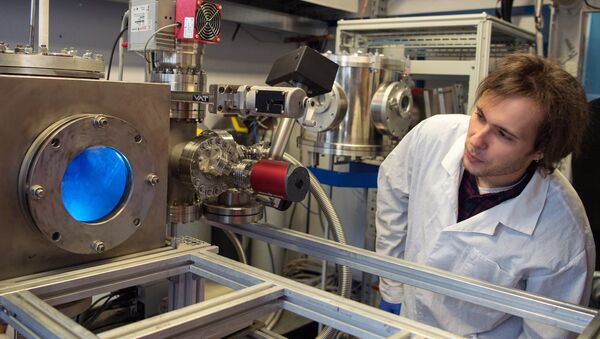MOSCOW (Sputnik) — Smart nanofluidic materials are hybrid materials consisting of a disordered nanoporous medium and non-wetting liquid or gel. Currently, experts are actively studying the “smart potential” of these substances at laboratories all over the world. This will make it possible to eventually develop sensors, actuators and elements that convert mechanical energy into electrical energy.
Many important modern technologies, including catalytic technology for fuel production, separating gases and purifying liquids, actively utilize processes inside a porous medium interacting with liquids or gases.
Experts of the Molecular Physics Faculty at the Institute of Nanotechnologies in Electronics, Spintronics and Photonics of the National Research Nuclear University (MEPhI) have discovered that the rapid build-up of external pressure which fills pores with liquid causes pressure inside the system to stop growing and to become permanent. At the same time, small changes in the amount of pressure cause large-scale changes in volume.
Based on generally accepted definitions, this system can be listed among smart materials capable of significantly changing their specifications and independently regulating the extent of their response to new conditions.
According to department chair Vladimir Borman, a device with this system makes it possible to absorb impact and to reduce the force affecting the protected object ten-fold. The system responds to increased impact energy by more actively filling in pores under constant pressure and by increasing impact-absorption duration. At the same time, pores are filled with viscous liquid in several thousandths of a second.
This filling speed exceeds estimated levels, stipulated by traditional hydrodynamic concepts, several dozen times over. It turns out that the filling speed does not depend on the liquid’s viscosity.
“The virtual absence of heat radiation during impact absorption is another unusual and important response of the system. This is what makes the system we are observing so different from other systems, and this also simplifies the task of developing new repeated action devices,” the scientist told RIA Novosti.
MEPhI experts have discovered another unique phenomenon, namely, the transfer of a non-wetting liquid, dispergated inside a nanoporous medium, into a “wetting state,” the abnormally slow relaxation of this state and the high temperature sensitivity of this transfer process.
Scientists are confident that the established dynamic properties of non-wetting liquid-disordered nanoporous medium systems will make it possible to use these systems for designing passive robotic sensors, self-regulating medicine dispensers and impact dampers, such as gloves consisting of smart nanofluidic materials, the surface of which can adhere to a ball without any recoil. Individual protection systems that absorb the energy of an explosion can also be designed using the above-mentioned systems.



